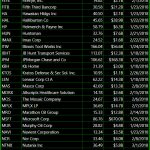Cue the latest economic (and Phillips curve) paradox.
On one hand, the US unemployment rate is at a 16 year low of 4.4%, suggesting little if any slack in the US economy, and according to anecdotes from both the Fed’s Beige Book and industry sources, labor shortages are so acute that – if one believes the recently discussed report from the NAHB – up to 75% of builders are unable to find construction workers.
On the other hand, according to a new Federal Reserve survey published on Monday for the first time, U.S. workers and job-seekers are so disenchanted with the labor situation, and harbor so little hope for higher paychecks, that even as they increasingly search for new jobs, they not only expect fewer job offers but anticipate increasingly lower paychecks.
According to the Fed survey, respondents said in July that the lowest annual salary they would accept in a new job would be $57,960, down from $59,660 only four months earlier and over $62,000 at the end of 2016: in fact, the average so-called “reservation wage” tumbled to the lowest amount since March 2015, as shown in the chart below.

According to Bloomberg, the decline in reservation wages was broad-based across demographic groups, showing up in responses from men and women, younger and older respondents, and those with and without college degrees alike. It offers a counterpoint to other data that suggest the U.S. job market has reached a state consistent with maximum employment, and may help explain why labor force participation has risen in recent months.
Worse, when asked what salary they expected in job offers over the next four months, the average response tumbled by 7% to $50,790 from $54,590 in a span of just 4 months, when the last survey was taken in March.
The latest Fed survey simply reflects the realities of Obama’s part-time “waiter and bartender” recovery: lots of available jobs with little to no wage growth potential.














Leave A Comment